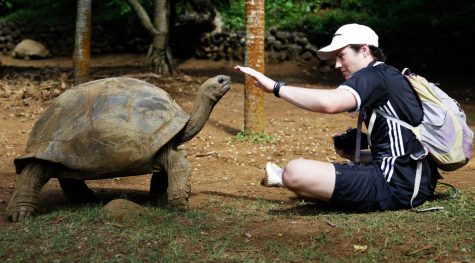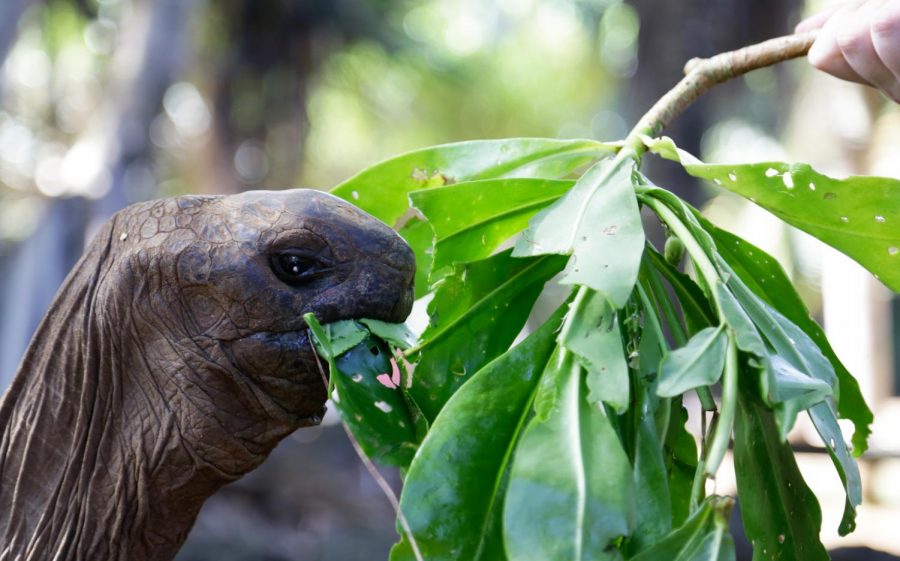Life at Sea: Docked at island of birds, tortoises
Mauritian island serves as protected refuge for some tropical species
Grand tortoises inhabit Ile aux Aigrettes, which works as a nature reserve to protect this species. They are some of the biggest tortoises in the world, weighing up to 900 pounds and reaching over 4 feet in length.
March 19, 2018
Off the coast of Madagascar, there are multiple islands, which are home to millions of animals and humans. One of these, Mauritius, is a small island packed with life, with a total landmass of 784 square miles and a population of 1.3 million people.
These islands are home to some of the rarest species of birds and the largest tortoises. Just off the coast of Mauritius lies an island called Ile aux Aigrettes, which serves as a nature reserve to help protect the species living there.
I arrived on the shore of Ile aux Aigrettes with limited knowledge about the rare and special animals that lived on the island. I wanted nothing more than to see them, but we had to find them first.
My group followed our guide as we scoured the brush and trees for any sign of life. Everyone filed into a small area where the surrounding trees provided shade. Laying there in the cool shade was one of the many giant tortoises that live on the island.

A Semester at Sea student sits down with a female giant tortoise, who had a gentle demeanor.
We learned these tortoises could weigh as much as 900 pounds and reach lengths of 4 feet, but nothing prepared me for the massive size of this lounging tortoise. Ile aux Aigrettes and Vanille Reserve des Mascareignes, a nature park on the island, both keep and protect populations of these tortoises.
While laying down, the top of its shell reached just below my knee. Our guide told us that this particular tortoise was a female because of the smooth dome shape of the shell.
She warned us of how sensitive the tortoises’ shells are. They can feel everything that not only touches their skin, but also their shell. When I brushed my hand over her shell, I could feel each bump and ridge.
Her skin was softer than I had originally imagined. I had pictured it being very rough and scratchy, much like what you would imagine a reptile’s skin. It hung loose on the tortoise’s neck, the soft skin layering itself with multiple folds and wrinkles. Much like the shell, her skin was a cool temperature, more like the soil under the shade of the trees.
She lay there quietly as each of us pet her shell and scratched her neck. The guide came around the back side of the giant animal and started scratching the back of her shell. Seemingly in pleasure, the tortoise began to slowly raise her hindquarters in the air like a dog ready to play fetch.
One famous species of bird that lives here is the pink pigeon. The pink pigeon was once listed as critically endangered, with only 10 reported in the 1990s. Since then, with help from the Mauritian Wildlife Foundation, their numbers have increased to around 400, 30 of which live on Ile aux Aigrettes. We saw three of those 30. They were perched in a tree, hidden from the sun and pecking at the tropical orange berries that covered the branches.
The pigeons and tortoises live out their lives on the island, protected by Mauritian Wildlife Foundation.























